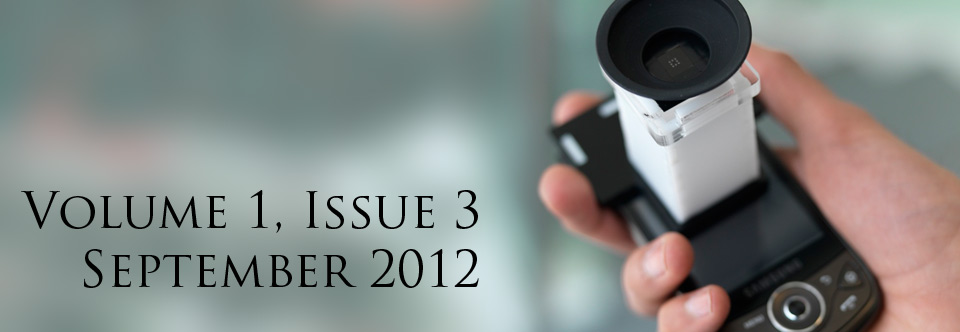Diagnoses at home: Introducing the Remotoscope

Move over iPhone 5 – And make way for the Remotoscope- an iPhone otoscope that will be patient- worthy in the near future.
Georgia Institute of Technology announced in a press release recently, that they are currently developing the ‘Remotoscope’ as an iphone app in combination with a clip-on attachment which instantly transforms a regular iphone into a powerful diagnostic tool, through which physicians can remotely diagnose a large number of ear diseases. Georgia Tech is in the process of improving its software and hardware to make it more user-friendly which will allow parents to just insert the device into their child’s ear canal, make a small video and then directly upload it to the child’s physician who will be able to make the diagnosis.
The technology involved is based on the Cellscope, a mobile microscope developed by the University of California, Berkeley in 2008. Cellscope technology, a small wonder in its own right, has the potential to be used in many different fields like Dermatology, Oncology and now thanks to the Remotoscope, even ENT practice. This microscope technology coupled with the camera and flash of the iphone is what makes the Remotoscope possible.
So how can we put the Remotoscope to work, you may ask? Well, the possibilities are endless really. Parents who live in remote areas all over the world, without ready access to prompt medical care, can use this nifty device to be the eyes of the physician and catch nasty ear infections early before they cause much damage. Physicians can use it to keep an eye on their patients and monitor the efficacy of their treatment. That’s not all. As former medical students we all know how difficult it was to figure out what the doctor had actually wanted us to look at. Well, thanks to the Remotoscope the students can now be shown exactly what the doctor sees and how to diagnose certain diseases based on what they see, in real time. The possibilities are endless.
The remotoscope was no small task to complete. Dr. Wilbur Lam and his colleague Erik Douglas created the start-up Cellscope Inc., starting the project while they were still doctoral students at UC Berkeley. Dr. Lam then brought the project over to Atlanta when he joined the faculty at Georgia Tech and Emory University, and now receives resources from both institutions as well as Children’s Healthcare of Atlanta and the Atlanta Clinical & Translational Science Institute. He hopes to commercialize the device once the FDA trials comparing the Remotoscope’s diagnostic quality to that of the traditional otoscope are complete and it receives FDA approval. The trial is partly being funded by the FDA, through the Atlanta Pediatric Device Consortium.
So the question is when will you see the Remotoscope in stores near you? The trial data will be published at the end of this year and Dr. Lam hopes FDA approval will also follow, allowing the Remotoscope to be a on quite a few Christmas Wishlists soon.
Press Release: Georgia Tech
Read More
 The Editorial Board at the Journal of Mobile Technology in Medicine is proud to present Volume 1, Issue 3, published in September 2012. Mobile technology in Medicine is a rapidly developing area, and we hope to continue accelerating research in the field. We look forward to your submissions for Issue 4.
The Editorial Board at the Journal of Mobile Technology in Medicine is proud to present Volume 1, Issue 3, published in September 2012. Mobile technology in Medicine is a rapidly developing area, and we hope to continue accelerating research in the field. We look forward to your submissions for Issue 4.